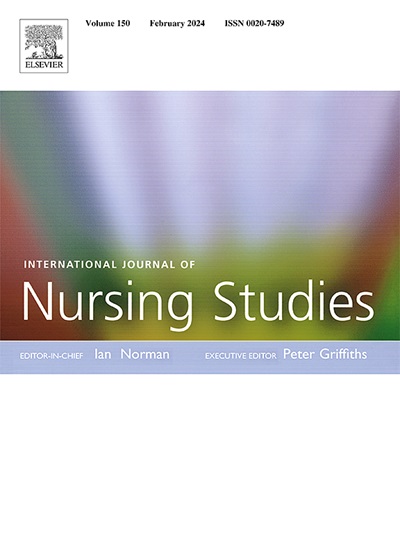我们如何优化护士配备系统?从10个广泛使用的模型的比较文件分析和实施经验的重点解释性审查的见解
IF 7.5
1区 医学
Q1 NURSING
引用次数: 0
摘要
高收入国家已经实施了各种各样的正式制度,以确保护士配备安全。证据审查表明,不存在最佳模型,并建议对现有系统进行优化。由于2019冠状病毒病大流行和全球护理人力危机,医疗保健系统和护理专业面临着充满挑战的未来。护士人员配备制度必须符合目的。目的识别、描述和比较护士人员配备系统的核心组成部分,评估环境对其作用机制的制约作用,并探索一线实施经验,为系统优化提供信息。样本:在西方高收入医疗体系中广泛使用的护士配置系统。理论:复杂干预思维与行动者网络理论。方法第一阶段:对正式公布的护士配备制度的文献分析。第二阶段:集中对现有评价研究的执行经验和背景影响的证据片段进行解释性审查。结论系统的复杂性、核心组成和组织逻辑各不相同。护士经历了一系列的实施挑战,但劳动力短缺和预算限制是主要的环境影响。优化护士人员配备制度的前瞻性战略必须根据系统和具体情况进行调整,但要包括增强专业权威的战略和工具、更细致的工作量测量、改进的结果测量、加强数字基础设施、加强治理安排和加强公共问责制。考虑到降低人员编制水平的规范冲动,应该谨慎使用基准方法。在全球劳动力短缺的背景下,还应考虑护士人员配备模式对更广泛的医疗保健系统的影响。摘要:我们如何优化安全的护士配备系统?基于行动者网络理论的文献分析和解释性评论。本文章由计算机程序翻译,如有差异,请以英文原文为准。
How can we optimise nurse staffing systems? Insights from a comparative document analysis of 10 widely used models and focused interpretative review of implementation experiences
Background
A diverse range of formal systems have been implemented in high income countries to ensure safe nurse staffing. Evidence reviews indicate that no one best model exists and recommends optimising existing systems. As a result of the Covid-19 pandemic and a global nursing workforce crisis, healthcare systems and the nursing profession face a challenging future. Nurse staffing systems must be fit for purpose.
Aim
Identify, describe and compare the core components of nurse staffing systems, assess the conditioning effects of context on their mechanisms of action, and explore front-line implementation experiences to inform system optimisation.
Sample
Ten widely used nurse staffing systems deployed in high-income western healthcare systems.
Theory
Complex interventions thinking and Actor Network Theory.
Methods
Phase 1: Document analysis of formal published accounts of nurse staffing systems. Phase 2: Focused interpretative review of evidential fragments on implementation experiences and contextual influences from available evaluation studies.
Conclusions
Systems varied in their complexity, core components, and organising logics. Nurses experience a range of implementation challenges, but workforce shortages and budgetary constraints were the principal contextual influences. Prospective strategies to optimise nurse staffing systems must be tailored to system and context but include strategies and tools to augment professional authority, more granular workload measurement, improved outcome measurements, strengthened digital infrastructures, enhanced governance arrangements and increased public accountability. Benchmarking approaches should be used with caution, given the normative impulse to depress staffing levels. In the context of a global workforce shortage, consideration should also be given to the impacts of nurse staffing models on the wider healthcare system.
Tweetable abstract: How can we optimise safe nurse staffing systems? Insights from a document analysis and interpretative review informed by actor network theory.
求助全文
通过发布文献求助,成功后即可免费获取论文全文。
去求助
来源期刊
CiteScore
15.00
自引率
2.50%
发文量
181
审稿时长
21 days
期刊介绍:
The International Journal of Nursing Studies (IJNS) is a highly respected journal that has been publishing original peer-reviewed articles since 1963. It provides a forum for original research and scholarship about health care delivery, organisation, management, workforce, policy, and research methods relevant to nursing, midwifery, and other health related professions. The journal aims to support evidence informed policy and practice by publishing research, systematic and other scholarly reviews, critical discussion, and commentary of the highest standard. The IJNS is indexed in major databases including PubMed, Medline, Thomson Reuters - Science Citation Index, Scopus, Thomson Reuters - Social Science Citation Index, CINAHL, and the BNI (British Nursing Index).

 求助内容:
求助内容: 应助结果提醒方式:
应助结果提醒方式:


